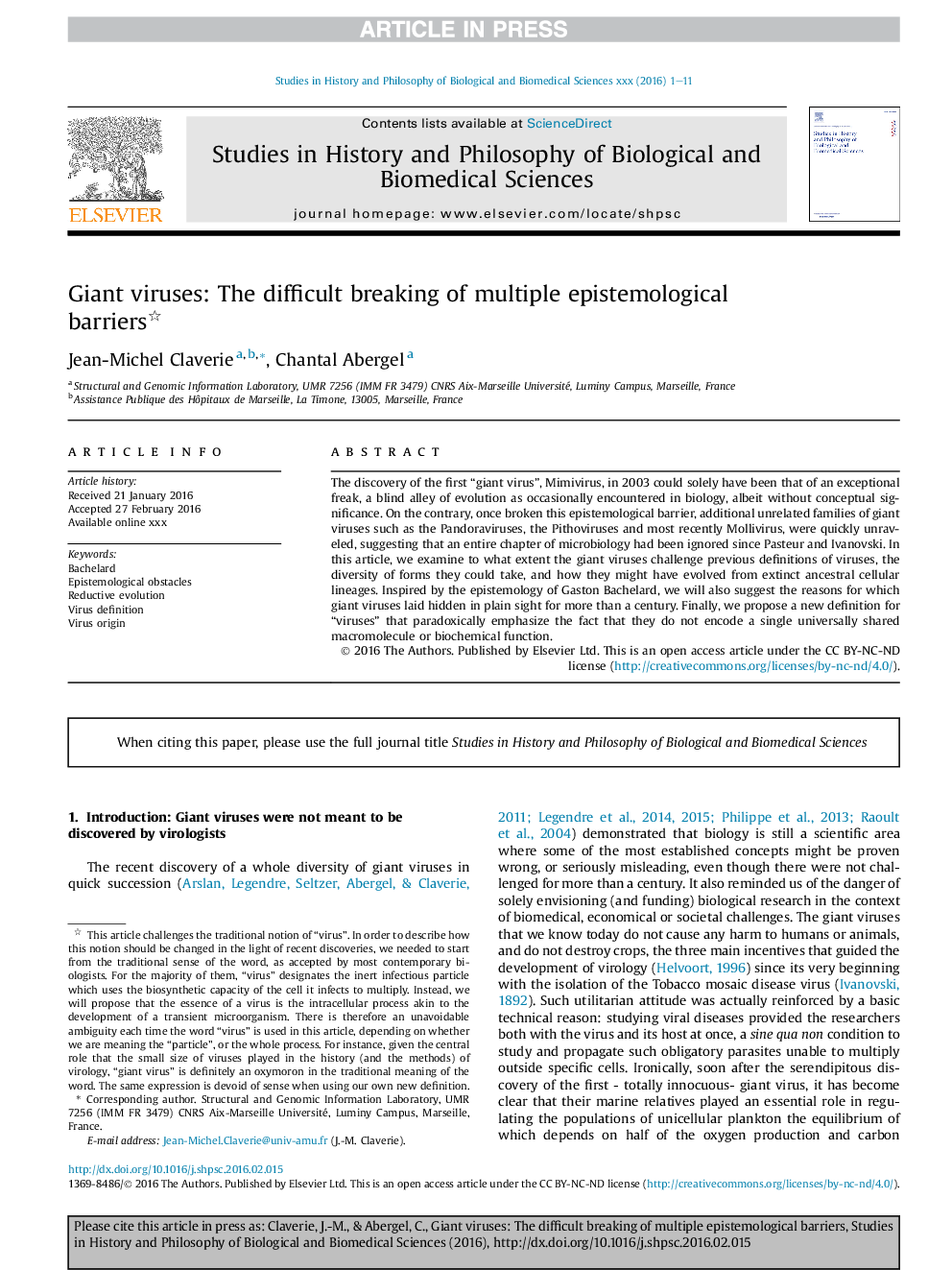| Article ID | Journal | Published Year | Pages | File Type |
|---|---|---|---|---|
| 7552167 | Studies in History and Philosophy of Science Part C: Studies in History and Philosophy of Biological and Biomedical Sciences | 2016 | 11 Pages |
Abstract
The discovery of the first “giant virus”, Mimivirus, in 2003 could solely have been that of an exceptional freak, a blind alley of evolution as occasionally encountered in biology, albeit without conceptual significance. On the contrary, once broken this epistemological barrier, additional unrelated families of giant viruses such as the Pandoraviruses, the Pithoviruses and most recently Mollivirus, were quickly unraveled, suggesting that an entire chapter of microbiology had been ignored since Pasteur and Ivanovski. In this article, we examine to what extent the giant viruses challenge previous definitions of viruses, the diversity of forms they could take, and how they might have evolved from extinct ancestral cellular lineages. Inspired by the epistemology of Gaston Bachelard, we will also suggest the reasons for which giant viruses laid hidden in plain sight for more than a century. Finally, we propose a new definition for “viruses” that paradoxically emphasize the fact that they do not encode a single universally shared macromolecule or biochemical function.
Keywords
Related Topics
Life Sciences
Agricultural and Biological Sciences
Agricultural and Biological Sciences (General)
Authors
Jean-Michel Claverie, Chantal Abergel,
